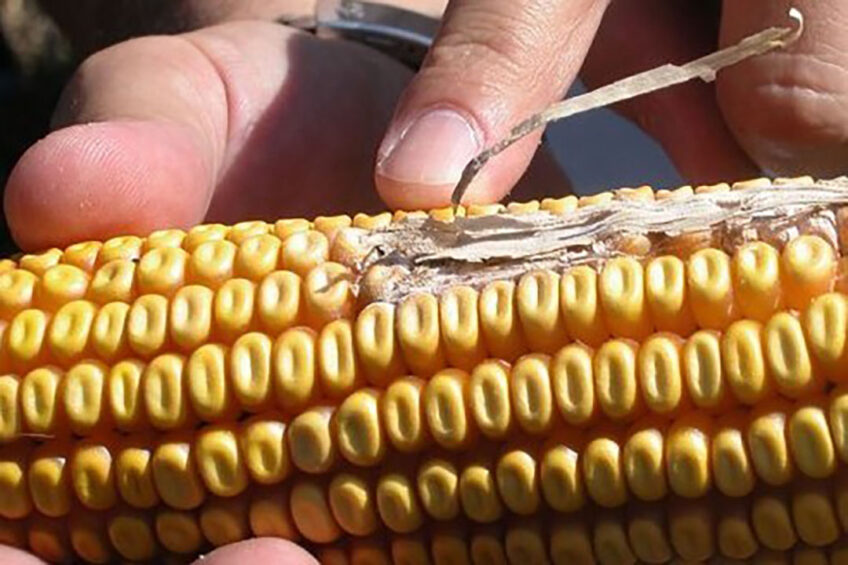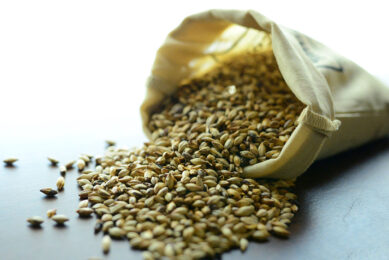Mycotoxins: How climate change is affecting crops worldwide

With climate change having a massive impact on the planet, mycotoxins, one of the main challenges in feed production, are no exception. In this recent study, researchers predict the impact of climate change on today’s major mycotoxins.
Environmental changes are slowly shaping the balance between plant growth and related fungal diseases. Climate represents the most important agroecosystem factor influencing the lifecycle stages of fungi and their ability to colonise crops, survive, and produce toxins. The ability of mycotoxigenic fungi to respond to climate change may induce a shift in their geographical distribution and in the pattern of mycotoxin occurrence.
This study examines the available evidence on the impact of climate change factors on growth and mycotoxin production by the key mycotoxigenic fungi belonging to the genera Aspergillus, Penicillium, and Fusarium, which include several species producing mycotoxins of the greatest concern worldwide: aflatoxins, ochratoxins, and fumonisins.
Climate change and fungal distribution
According to the researchers, increased temperatures will mean an overall increase in mycotoxigenic fungi suited to higher temperatures, such as aflatoxin-producing Aspergillus species, which represent an important hazard to human and animal health. Aspergillus spp. (Aflatoxin and Ochratoxin A producers) have been shown to occupy primarily tropical/subtropical regions growing at high temperatures and lowered water activity (aw). Comparing other mycotoxin-producing species, studies show that in hotter climatic scenarios A. niger may also gain more prevalence over A. carbonarius, as the former is better adapted to high temperatures and drier conditions than the latter.
‘AFB1 production is significantly stimulated under the 3-way interacting climate change-related factors’
As reported in previous studies, changes in mycotoxigenic fungi due to climate change are already observed; examples of modified weather regimes impacting mycotoxins were demonstrated by the 2003, 2004, and 2012 summer seasons in Italy where dry and hot weather (>35°C) contributed to an outbreak of A. flavus on crops, previously uncommon, by out-competing the more common Fusarium species and fumonisins contamination and causing an increase in Aflatoxin B1 (AFB1). Similarly, in France in 2015, which was an exceptionally hot and dry year, A. flavus was isolated from maize samples with a high percentage of 69%.
Climate change on mycotoxin contamination
Aflatoxins
Aflatoxins are one of the most toxic mycotoxins known. The dominant aflatoxin produced (AFB1) is the most powerful naturally occurring carcinogen. It is therefore of particular importance to understand how levels of this mycotoxin may shift alongside climate change. Aflatoxins are produced in different crops by several species of Aspergillus, predominantly A. flavus and A. parasiticus, both characterised by the ability to persist in the most extreme climate warming conditions, as highlighted by their high optimum temperature.
Studies in vitro and on stored maize grain showed that AFB1 production is significantly stimulated under the 3-way interacting climate change-related factors (temperature, CO2, and aw), as demonstrated by the increase in the relative expression levels of structural and regulatory biosynthetic genes involved in aflatoxin production.
Studies show that, more recently, there has been a widespread incidence of aflatoxin contamination in countries not previously considered at risk resulting from persistent drought conditions and rising temperatures. A survey conducted by the European Food Safety Authority (EFSA) established the emerging issue of potential aflatoxin contamination in areas of southern Europe in maize, wheat, and rice linked to the subtropical climate and the numerous hot and dry seasons that have occurred in the recent years. In addition, a shift in traditional occurrence areas of aflatoxins is also expected.
Ochratoxin A
Ochratoxin A (OTA) is produced by Penicillium verrucosum and several Aspergillus species, including A. ochraceus, A. alliaceus, A. carbonarius, and A. niger. This mycotoxin has been found in a variety of crops such as barley, grapes, rye, wheat, and coffee. An essential condition for OTA production is the availability of water. An aw > 0.95 is considered too humid and can favour other fungi, including yeast, which may limit OTA-producing fungi colonisation; an aw < 0.80 is considered too dry and OTA-producing fungi are unable to produce the mycotoxin. In a study on maize grains, at 30°C, the production of OTA by A. ochraceus was significantly higher at 0.95 than at 0.99 aw. Alternatively, on barley grains, the optimal growth and toxin production were registered at 30°C and 0.99 aw.
“…climate change may easily jeopardise the growth of F. verticillioides.”
Fumonisins
Fusarium is a genus that includes plant-pathogenic fungi responsible for a variety of diseases on several different crops and with known potential in producing mycotoxins capable of adverse effects in humans and animals. Studies show Fusarium species can tolerate a wide range of temperatures and pH levels, require a relatively high aw for growing, are usually well established in a crop before harvesting, and may cause problems in grains following a late harvest after a rainy summer.
Fumonisins are produced in cereals mainly by Fusarium verticillioides and Fusarium proliferatum. Fumonisins contamination is strictly associated with agroclimatic conditions and is prevalent in maize and maize sub-products compared with other grains and related derivatives. The researchers stated: “The growth of F. verticillioides occurs at a minimum temperature of 4°C and has a favourable temperature of 25°C, meaning climate change may easily jeopardise the growth of F. verticillioides.”
A negative effect on crops globally
Overall, the evidence suggests climate change will negatively affect crops worldwide in terms of loss of suitable cultivation areas and an increase in mycotoxin contamination. Global warming will make growing crops in some areas impossible and, where growing crops will be possible, plants will be subjected to suboptimal climatic conditions, resulting in increased susceptibility to fungal contamination. Furthermore, warmer climates will favour thermotolerant species, leading to, for example, the prevalence of Aspergillus over Penicillium species.
The next urgent step is to use the models to give directions for adaptation to climate change to assure mycotoxin levels in grains stay below legal limits for raw materials and derived feed and food, and to safeguard feed and food safety. The researchers suggest that if mycotoxin forecasting models were linked to land use models such as the iCLUE model and crop phenology models, such scenarios could be investigated and used to give directions on the use of our land and cultivation of crops in such a way that safe feed and food can be produced under the estimated climate change effects.
* This article is based on the original article by Veronica Zingales, Mercedes Taroncher, Piera Anna Martino, María-José Ruiz, and Francesca Caloni, 2022, Climate Change and Effects on Molds and Mycotoxins. Toxins, Vol 14: 445.
Join 26,000+ subscribers
Subscribe to our newsletter to stay updated about all the need-to-know content in the feed sector, three times a week. Beheer
Beheer









 WP Admin
WP Admin  Bewerk bericht
Bewerk bericht